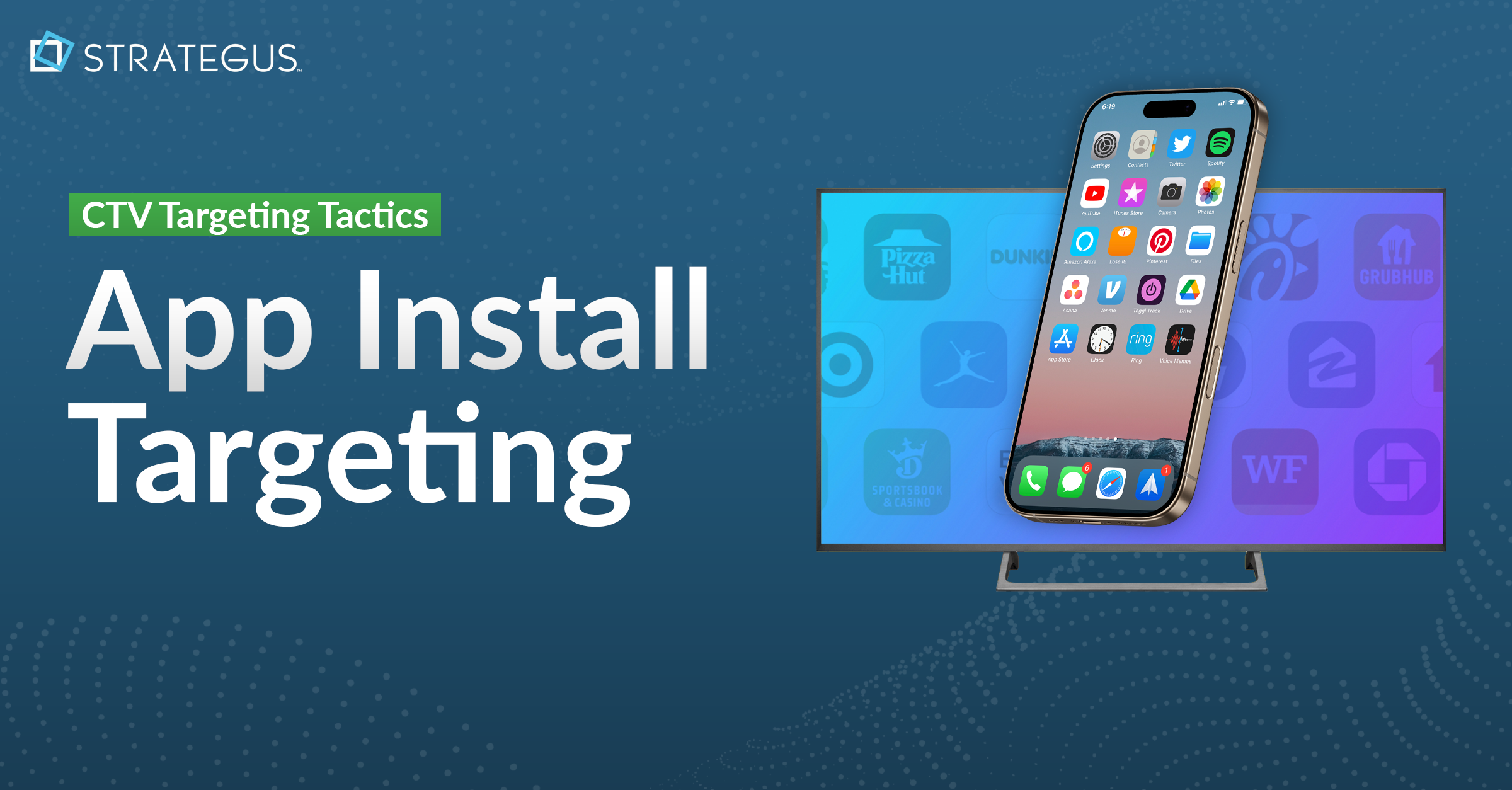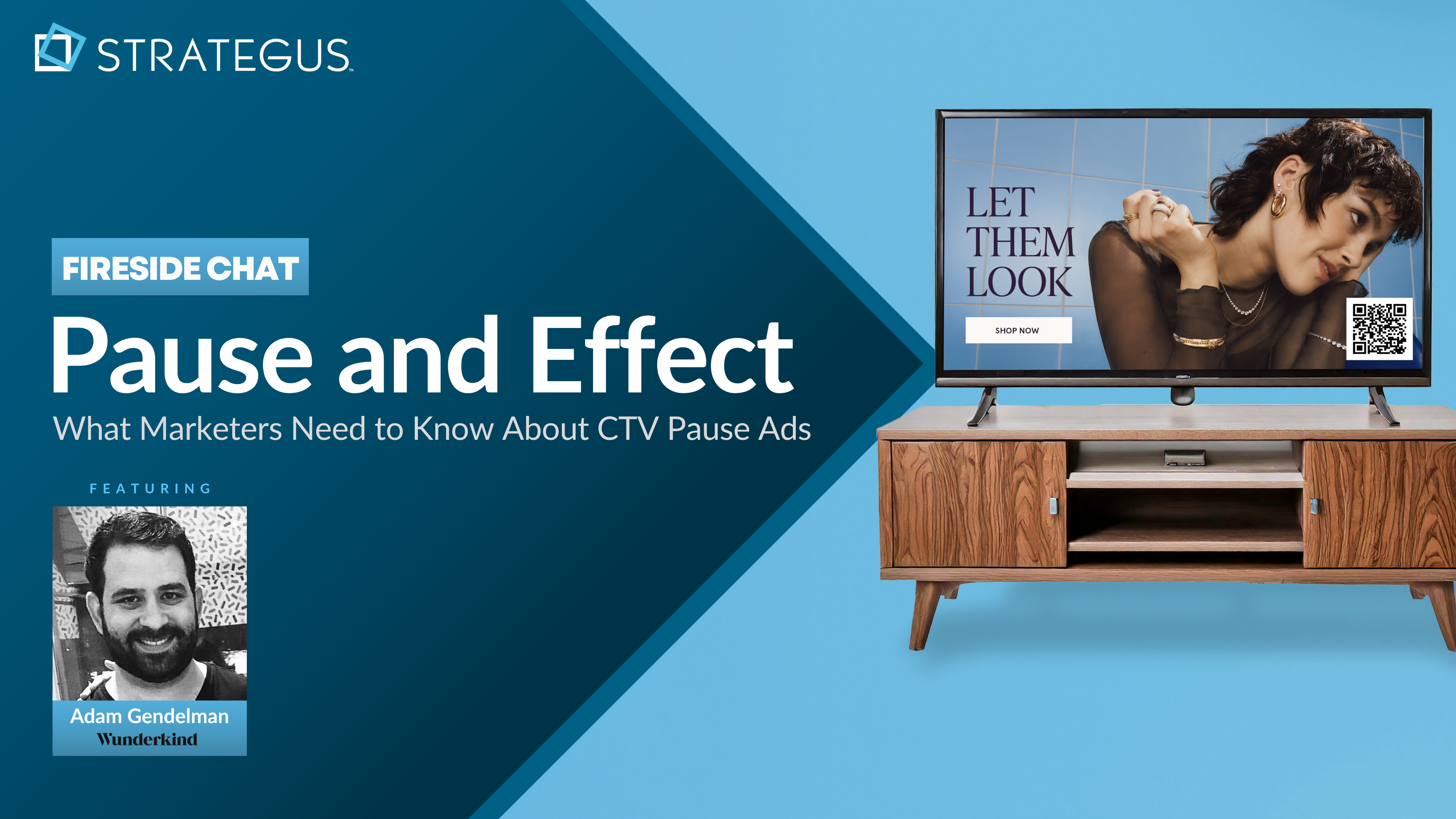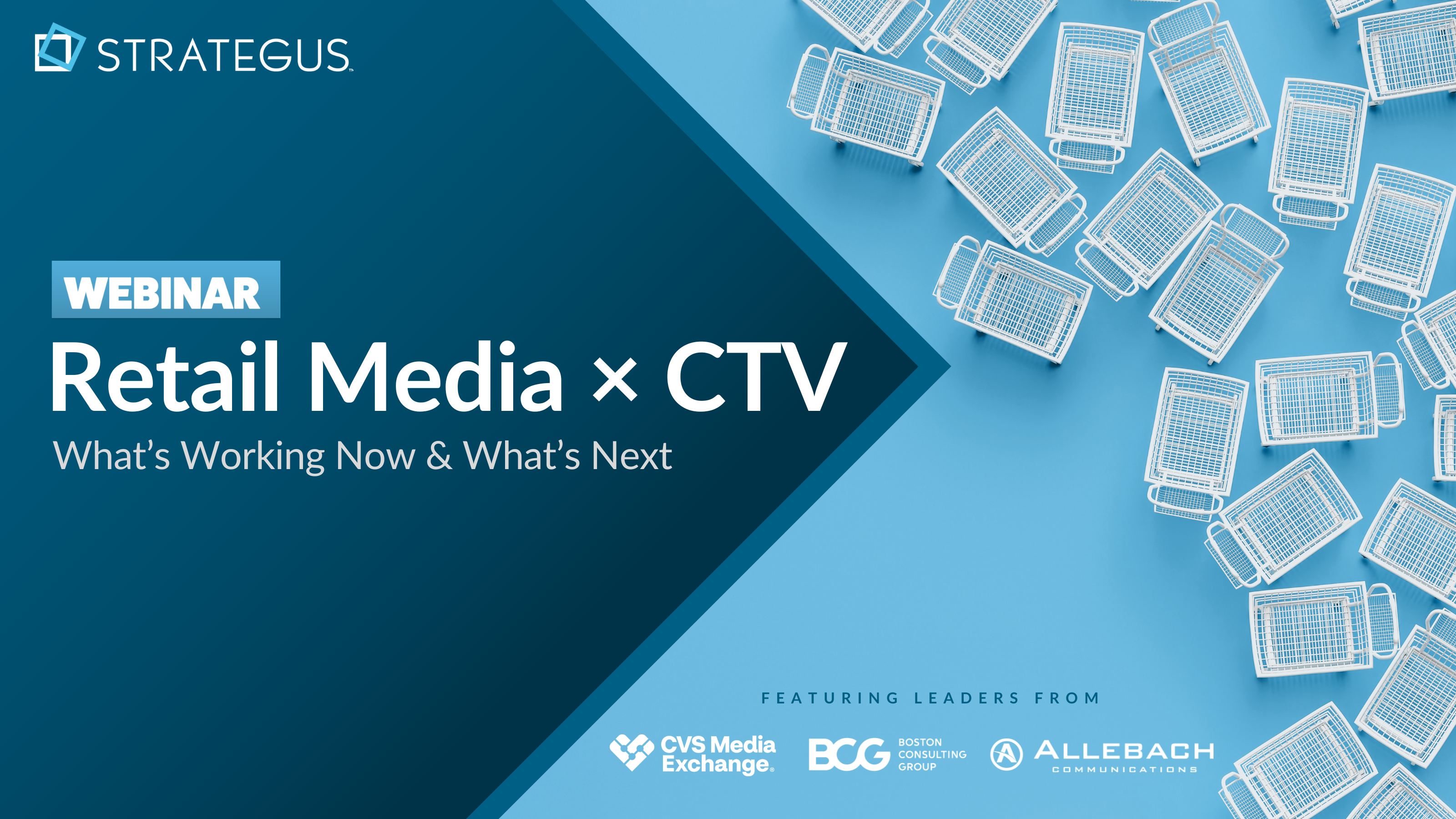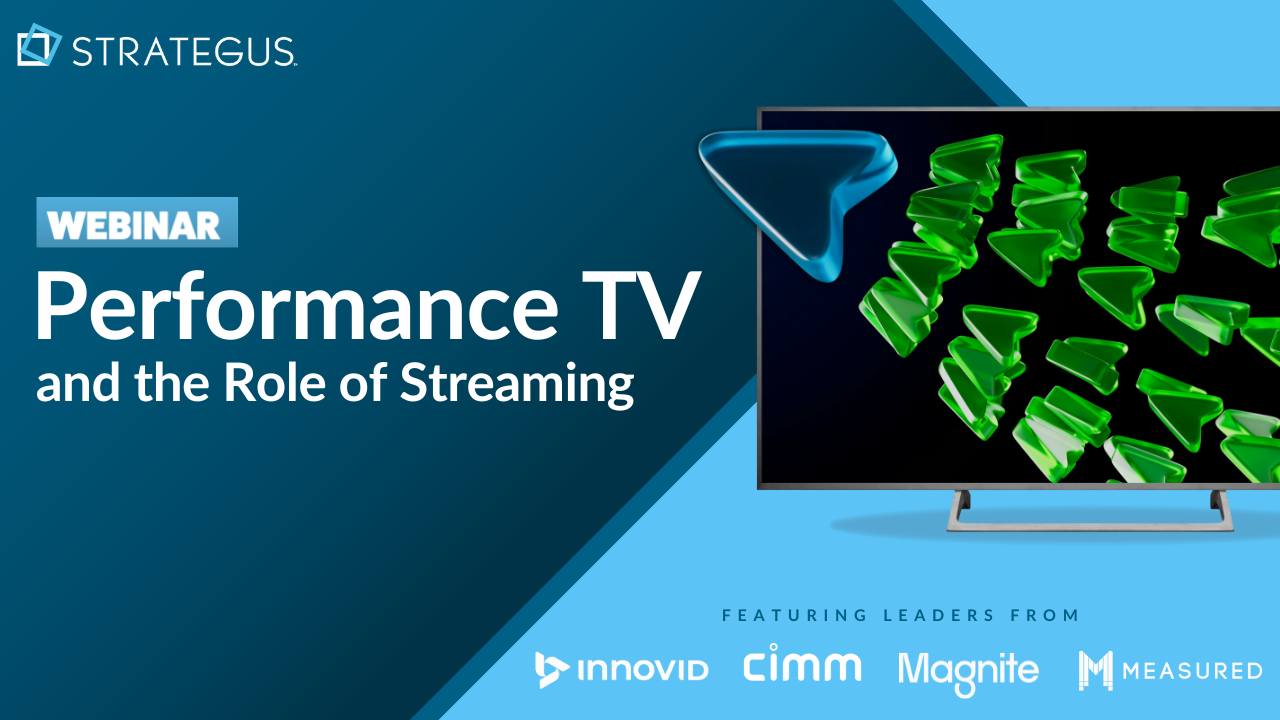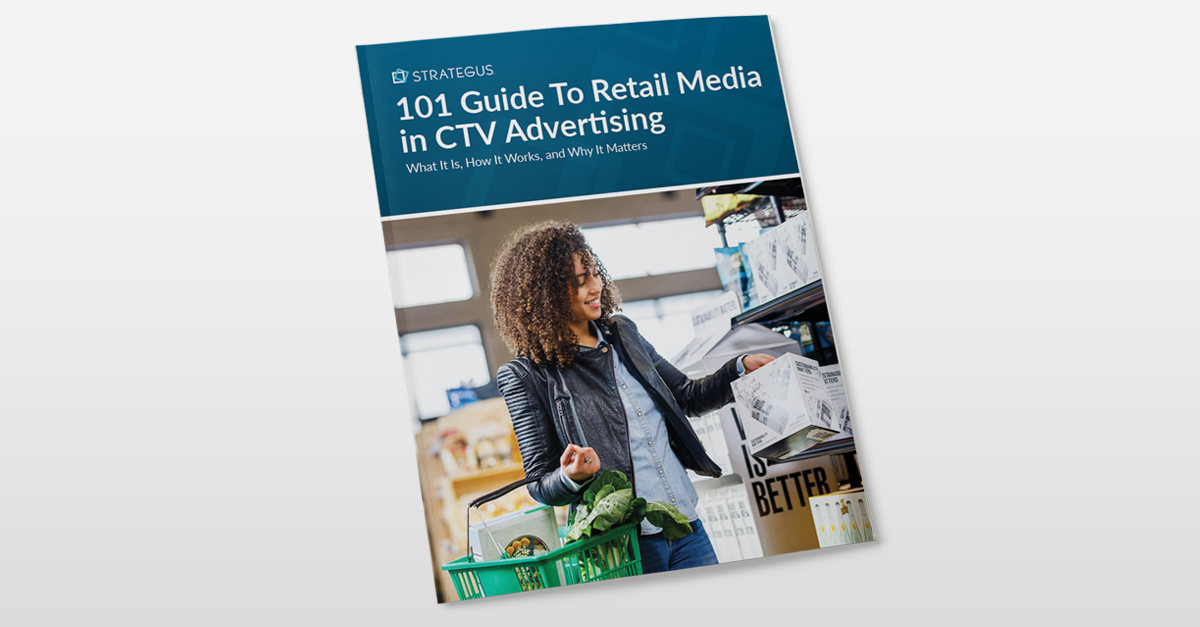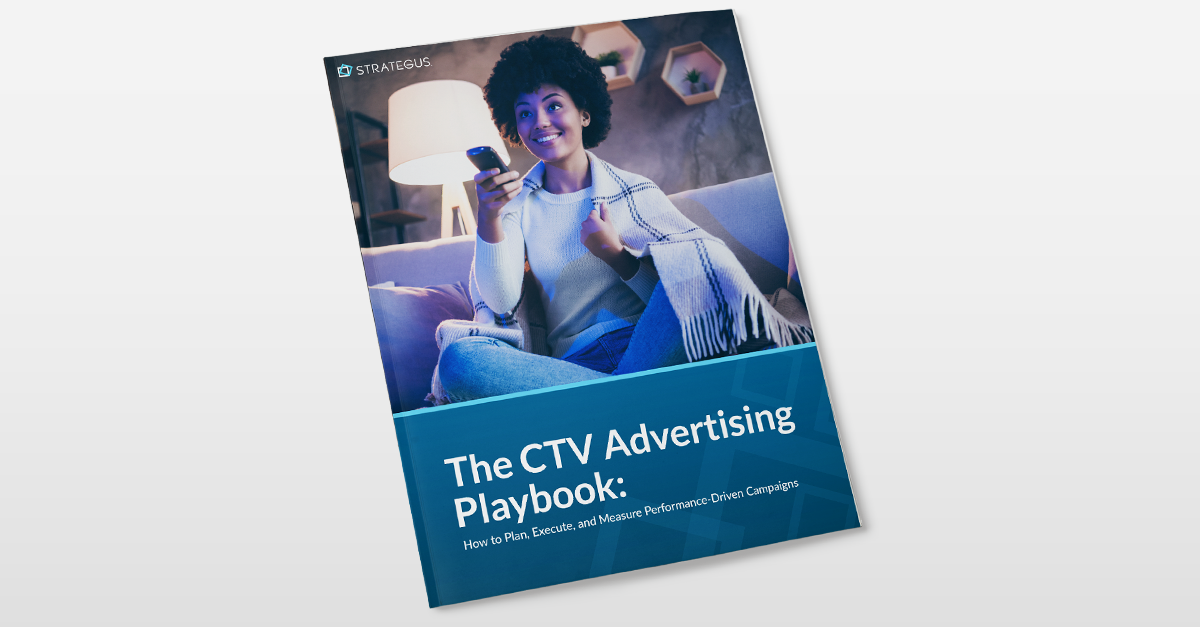- Home
- Strategus Blog
- What is CTV Retargeting and How It Drives ROI
What is CTV Retargeting and How It Drives ROI
 Traci Ruether
Traci Ruether
10 minutes read
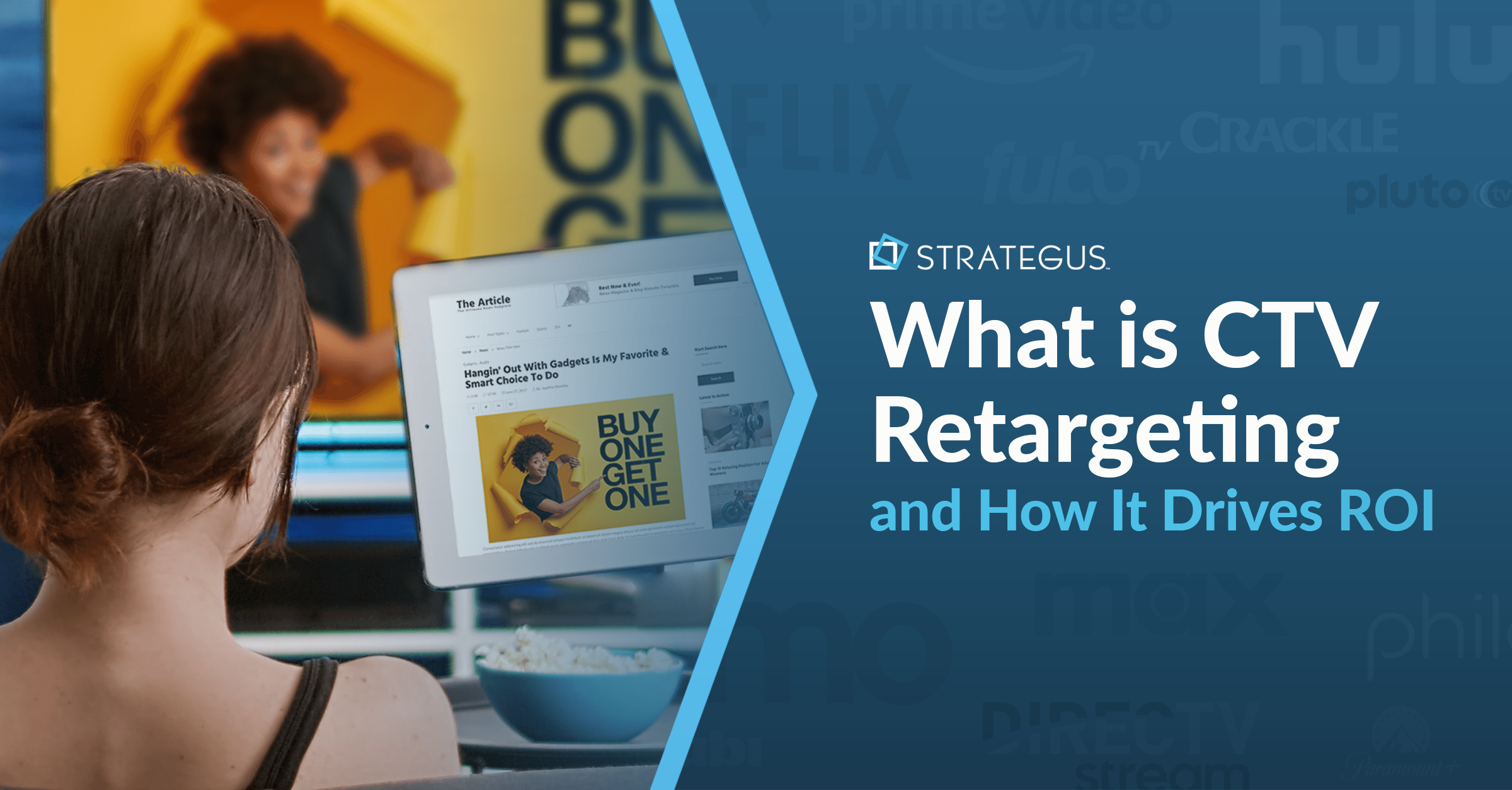
You see a spa ad on TV and think, I should book that.
The next day, a display ad reminds you, and now you actually do it.
That’s CTV retargeting doing exactly what it is supposed to: reinforcing interest across devices and prompting action.
Unlike traditional TV, CTV lives in a data-rich, trackable environment. Advertisers can follow viewers across screens, serving tailored messages wherever they go. From re-engaging warm leads on TV to remarketing through display, CTV retargeting boosts campaign performance and ROI.
This guide breaks down how to build smart, cross-device CTV retargeting campaigns, and which metrics to track at every stage.
Key Takeaways
- CTV retargeting re-engages known viewers across TV, mobile, and desktop using deterministic matching, lifting recall and conversion intent.
- Omnichannel orchestration links CTV exposure to follow-up display, video, audio, and search, accelerating movement from awareness to purchase.
- Full-funnel sequencing tailors creative by stage, from broad TV reach to cart-abandoner offers and dynamic product messaging.
- Measurement spans after-ad search, site visits, foot traffic, online revenue, and CRM matches, enabling true ROAS and budget optimization.
- Frequency control, audience segmentation, and device-level reporting prevent fatigue and waste while revealing the highest-yield paths to conversion.
- Strategus delivers managed CTV retargeting with cross-device identity, advanced attribution, and real-time optimization; speak with an expert to scale ROI. Speak to a Strategus expert to learn more today.
What Is CTV Retargeting?
CTV retargeting describes multi-touch campaigns that reach the same users across their living room TVs, smartphones, and more using deterministic matching. In a nutshell, the concept is to follow up by delivering subsequent ads to people who’ve already been exposed to your brand.
CTV retargeting can go both ways. It can mean showing CTV ads to existing prospects who’ve gone cold, or it can take the form of delivering audio ads to users who’ve previously become acquainted with your brand on their living room TV. And in many cases, it’s a blend of both.
The goal is to re-engage the same viewers who’ve already encountered your brand until they’re ready to buy. Given that it can take seven or more exposures to a brand before customers are ready to make a purchase, this helps deliver the persistence needed to convert prospects.
How Does CTV Work With Omnichannel Marketing?
In the past, the best you could hope for when advertising on TV was increased brand awareness. That’s because, unlike direct response marketing tactics that trigger immediate action, TV commercials often expose viewers to a product or service without giving any clear call to action.
Similarly, traditional TV ad campaigns don’t provide media buyers with information on which viewers see a given commercial, making it impossible to incorporate impressions into an omnichannel approach.
With streaming services like Hulu and CTV devices like Roku, this all changed. Advertisers now have the option to precisely target viewers using first- and third-party data, and then retarget those who watched an ad on other devices via display, online video, audio, and more.
In this way, brands and agencies were able to start creating cohesive CTV-first experiences that nurtured buyers down the funnel. This turned a living room TV into a performance channel, allowing innovators to integrate CTV into their omnichannel strategy.

Examples of Connected TV Retargeting
CTV retargeting isn’t a rigid playbook, and it can be fully customized based on how your buyers behave. You’ll also want to consider what your unique marketing funnel looks like and which channels are not worth it.
Here are some examples of CTV retargeting:
- Retargeting site visitors with a CTV ad.
- Retargeting users who've been exposed to your brand on CTV with an audio ad.
- Retargeting users who've been exposed to your brand on CTV with a display ad.
- Retargeting prospects from your contact list (first-party CRM data) with a CTV ad.
- Retargeting users who’ve been exposed to your brand on CTV with an in-game ad.
- Retargeting users who've been exposed to your brand on CTV with an online video ad.
Ideally, you’d mix several of the tactics listed above, while continuously testing to see which channels and paths perform the best.
How to Integrate CTV Retargeting into Full-Funnel Campaigns
On a surface level, CTV retargeting is all about following viewers around with the same ad until they crack. In reality, it creates a sophisticated journey that nurtures prospects from initial awareness to conversion. The full retargeting effect happens when you combine the premium, lean-back experience of television with the precision tracking of digital marketing.
Most marketers think less of how big a change retargeting brings to the traditional funnel. Unlike display retargeting that feels intrusive, CTV retargeting reaches viewers during their most engaged moments: when they're actively choosing to watch content. This captive attention, combined with cross-device tracking capabilities, creates unprecedented opportunities to guide prospects through their purchase journey without the aggressive tactics that plague other digital channels.
Here's how to strategically deploy CTV retargeting across each funnel stage to maximize ROI:
- Initial Exposure & Pixel Building (Top of Funnel): Cast a wide net with broad CTV campaigns to build your retargeting pool. Place tracking pixels across landing pages and website content. Segment audiences based on content consumption patterns and engagement levels.
- Sequential Storytelling (Middle of Funnel): Deliver progressive messaging based on previous ad exposure and website behavior. Increase frequency for viewers who've engaged but haven't converted. Implement cross-device retargeting to reinforce CTV messages on mobile and desktop.
- Conversion Acceleration (Bottom of Funnel): Target cart abandoners with dynamic product ads featuring specific items they viewed. Deploy time-sensitive offers to viewers who've shown high intent signals. Activate companion display ads immediately after CTV exposure for instant action.
- Retention & Expansion (Post-Purchase): Suppress recent converters from acquisition campaigns to avoid waste. Retarget customers with complementary product recommendations based on purchase history.
Key Performance Indicators (KPIs) to Measure Success
Measuring the performance of such complex campaigns requires advanced marketing attribution and reporting capabilities. While metrics about things like video completion rate (VCR) are widespread in the CTV advertising world, marketers need to dig deeper to tie ad impressions to revenue.
1. Attribution Touchpoints
To fully quantify the return on ad spend (ROAS), you’ll want to illustrate how your prospects progress down the path to purchase. It’s also key that you acknowledge every lead that was previously influenced by a CTV ad. This means going beyond first- or last-touch attribution and connecting all the dots along the way.
We’d suggest tracking the many attribution points that indicate CTV success. Depending on your goals and customer journey, these may include:
- After-Ad influence: Measure how consumers were impacted by your ad with data about actions they take after watching an ad, such as researching your products and services.
- Brand Lift Studies: Gain more intel about how campaign exposure influences awareness, attitudes, and opinions about your company.
- Post-View Website Visits: See direct traffic to your site that resulted from seeing your CTV ad.
- Foot Traffic: Use GPS to report on users who visit brick-and-mortar locations after viewing your ad.
- Online Purchases: Identify customers who made purchases from your online store following an ad exposure.
- First-Party Data: Determine if your customers perform any actions, like a form-fill, as a result of your campaign via CRM matching.
- CPG: Use SKU-level purchase data to tie online ad impressions to offline purchase behavior, specifically for consumer packaged goods that are often bought in physical stores.
- Revenue: Implement a revenue tracking pixel to pass back the exact revenue associated with each online purchase generated by your ad campaign
- Search and Social: Link conversions influenced by your CTV ad efforts with search and social channels like paid advertising on Google, Facebook, and Instagram.
At Strategus, we offer a full suite of customizable attribution solutions spanning the many touchpoints listed above. We also continue to innovate by making our attribution suite more robust, connecting marketers with an ever-growing array of methods to track audience engagement.
2. CTV Metrics

Beyond using attribution measurement tools to gain data on the customer journey, it’s also a good idea to set goals based on many of the metrics that can be tracked in digital advertising environments.
Impressions and video completion rates do little more than prove that your campaigns are up and running. Ideally, you’d get much further in the weeds by measuring conversions, click-through rates, and the like.
Here are some of the metrics that you might want to track:
- Impressions: This metric provides data on how many people saw at least a portion of your CTV ads. Although it’s more of a vanity metric in that it doesn’t quantify revenue, it still sheds some light on the reach of a given campaign.
- Video Completion Rate (VCR): Video completion rate is often high for CTV advertising because the ads are non-skippable and play within user-selected content. For this reason, you should demand much more from your CTV reporting to really drive performance.
- Conversion Rate: Conversion rate measures the percentage of users who’ve completed a desired action. This could be filling out a contact form, making an online purchase, or foot traffic into brick-and-mortar locations. These actions should be customized to each brand and are tied directly to attribution capabilities.
- Click-Through Rate (CTR): Click-through rate measures the number of clicks per impression. While CTR will mostly be low, any increase indicates that your efforts are resonating with viewers and driving action. This metric should always be considered in terms of the goal and channel. An awareness ad won’t have a high click-through rate, nor will a CTV ad that lacks clickable elements.
- Return on Ad Spend (ROAS): ROAS is calculated by dividing the profit made from advertising by advertising costs. Any figure greater than 1 indicates success because it means you broke even. By comparing ROAS across different campaigns, you’re able to determine which tactics are more successful and optimize accordingly. Again, full-suite attribution is required to measure all revenue generated by a given campaign.
- Audience Segment: You’ll want to compare the metrics across audience groups to see how your message is resonating with different viewers and where there’s room for improvement. For instance, if a university finds that ads targeting individuals over age 40 aren’t converting well, they may consider adapting the creative to better connect with those viewers.
- Geoperformance: Geoperformance allows you to compare the metrics above across different geographic regions and determine which locations you’d like to invest more budget into based on performance.
The ability to measure all of the conversions, revenue, and clicks generated by a specific campaign is not always possible. Agencies and brands either need to streamline their efforts with a single CTV partner or build out an internal team and dashboard to consolidate the data.
One of the major benefits of working with Strategus is that we’re able to design comprehensive campaigns that use the entire programmatic ecosystem, and then provide real-time peeks into the metrics detailed above on our 24/7 reporting dashboard.
Companies that partner with us can quickly see all of the conversions and clicks driven from a given campaign, even if the conversions took place outside of the digital ecosystem.
Closing Thoughts — CTV Retargeting with Strategus
CTV retargeting is one of the most powerful tools in modern advertising, allowing brands to reconnect with viewers who have already engaged with their content or visited their websites.
However, implementing effective CTV retargeting comes with its own set of challenges. Unlike digital display or social media campaigns, CTV operates in a fragmented ecosystem across multiple platforms, apps, and devices. Accurately identifying viewers, matching them across screens, and ensuring frequency caps are respected requires advanced data integration and real-time optimization. Without the right technology and expertise, campaigns can easily waste impressions, reach the wrong audiences, or fail to deliver measurable results.
This is where Strategus provides a clear advantage. As a fully managed partner, we specialize in CTV retargeting campaigns that overcome these obstacles. Our team combines first- and third-party data to build precise audience segments, leverages cross-device capabilities to ensure continuity, and continuously optimizes campaigns for maximum ROI. From creative placement to advanced attribution, we manage every component of the campaign so advertisers can focus on strategy and outcomes rather than technical execution.
For brands looking to get the most from CTV retargeting without the complexity and risk, partnering with us can help. Speak to a Strategus expert to learn more today.
Frequently Asked Questions
1. How Does Retargeting Work Technically?
Retargeting uses tracking pixels or device IDs to identify users who’ve interacted with your brand. Once tagged, those users are served follow-up ads across channels like CTV, display, or audio. This process relies on real-time data and cross-device matching to deliver consistent, personalized ads throughout the buyer’s journey.
2. How to Retarget YouTube Viewers?
You can retarget YouTube viewers by using Google Ads. Set up a video campaign, then create custom audiences based on user interactions, such as views, likes, or subscriptions. Once users enter your audience list, you can serve them follow-up ads across YouTube, display, or other Google-owned properties.
3. What Is CRM Retargeting?
CRM retargeting uses your existing customer data, like email addresses or phone numbers to find those users online and serve them targeted ads. Platforms match this data to digital profiles, allowing you to show personalized ads across CTV, display, or social channels to re-engage past leads or customers.
4. What Is Display Retargeting?
Display retargeting shows visual ads, like banners or sidebars, to people who have previously visited your website or app. These ads appear across websites and apps in a user’s daily browsing journey, reminding them of your brand and encouraging them to return and convert.
5. What Is the First Step of Display Retargeting?
The first step of display retargeting is adding a tracking pixel or code snippet to your website. This pixel tracks user behavior and builds a retargeting list. Once users visit your site, the pixel allows you to follow up with display ads on other websites they visit.
6. What Is Video Retargeting?
Video retargeting shows follow-up video ads to people who’ve already interacted with your brand. These can appear on platforms like YouTube, streaming apps, or in-app video players. This strategy keeps your brand message visible and engages users with rich, immersive content during their purchase journey.a

Traci Ruether is a content marketing consultant specializing in video tech. With over a decade of experience leading content strategy, she takes a metrics-driven approach to storytelling that drives traffic to her clients' websites. Follow her on LinkedIn at linkedin.com/in/traci-ruether or learn more at traciruether.com.
Strategus is a managed services connected TV(CTV) advertising agency with over 60,000+ campaigns delivered. Find out how our experts can extend your team and drive the result that matter most.
Talk to an Expert
Table of Contents
Seeking a Custom CTV Strategy That Delivers?
What to read next
App Event Tracking: Tie Mobile App Activity to CTV Campaigns
Let’s say you’re running a CTV campaign for a personal finance app.
5 minutes read

Stop Guessing Who Your Audience Is — Let Their Apps Tell You
Connected TV (CTV) targeting often falls in one of two camps.
8 minutes read
See Who Bought After Your Ad + How Much They Spent
You can’t improve what you can’t measure. And for years, that’s been a major problem with TV advertising.
4 minutes read

First-Party Attribution: Match Ads to Sales With CRM Data
The value of first-party data continues to grow.
7 minutes read



